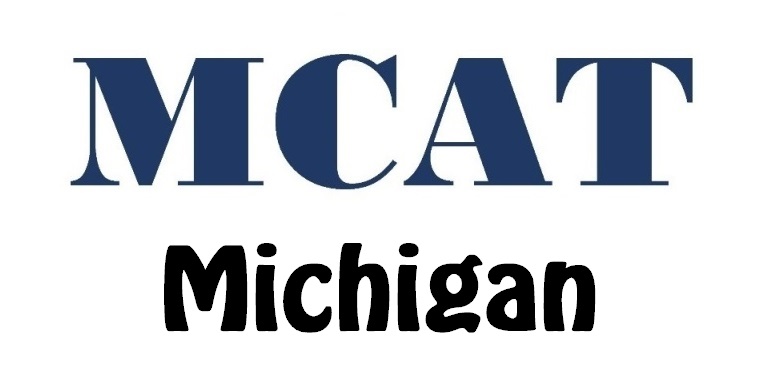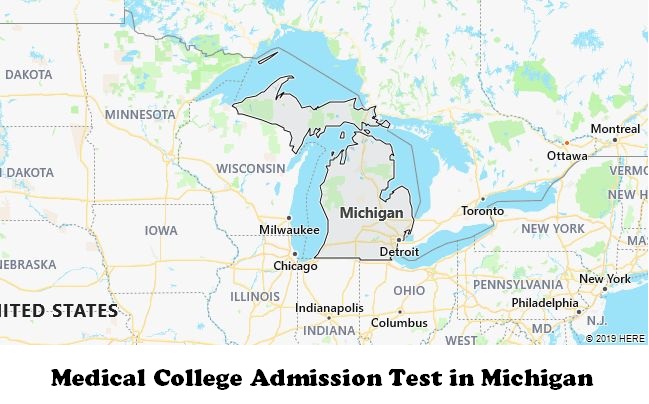According to AAMC (the MCAT test maker), there are 11 MCAT test centers in Michigan. Most testing centers are located inside a college or university. You can select a testing location that is nearest to you. Please note that you are able to choose a test center when registering for the MCAT.

Ann Arbor – Briarwood Circle
555 Briarwood Circle
Suite 110
ANN ARBOR, MI 48108
Detroit – Auburn Hills
2851 High Meadow Circle
Suite 160
Auburn Hills, MI 48326
ETS – WAYNE STATE UNIVERSITY
5700 Cass Avenue
Academic/Administrative Building Room 1900
DETROIT, MI 48202
ETS- MICHIGAN STATE UNIVERSITY
Mich St Univ Testing Office
Student Services Building
556 E. Circle Drive Room 207
East Lansing, MI 48824
Grand Rapids – Burton Street SE
3910 BURTON ST. SE
SUITE 101
GRAND RAPIDS, MI 49546
Lansing – Kerry Street
2500 KERRY STREET
SUITE #200
LANSING, MI 48912
Detroit – Livonia
37727 PROFESSIONAL CENTER DRIVE
SUITE #130
LIVONIA, MI 48154
Detroit – Livonia
37727 Professional Center
Suite 135
Livonia, MI 48154
ETS – CENTRAL MICHIGAN UNIV.
260 West Hopkins Court
Mt. Pleasant, MI 48859
Sault Ste Marie – Lake Superior State University
Lake Superior State University
906 Ryan Street
Kenneth J Shouldice Library Building Room 206
Sault Ste Marie, MI 49783
Detroit – Troy
3290 WEST BIG BEAVER ROAD
SUITE 160
TROY, MI 48084

History of Michigan
Just like in other US states, on the territory of the modern state of Michigan, many centuries before the arrival of Europeans, the indigenous residents of the North American continent lived here – the Indians.
The Indian tribes of Ojibwe, Ottawa, Potawatomi (these three peoples formed an alliance known as the “Council of Three Lights”), Menominee, Wyandots (Hurons) and others lived on the Michigan peninsulas.
The first European explorer came to the lands of Michigan in 1620 (according to other sources – in 1622). It was the Frenchman Etienne Brule, who explored the Great Lakes region and visited the Upper Peninsula of Michigan.
The first permanent settlement in Michigan was founded by the French Jesuit missionary Jacques Marquette in 1668, the Mission of Sault Ste. Marie in the Upper Peninsula. Jacques Marquette is one of the most famous and prominent explorers in North America. Counties, cities, an island, a university, schools, and many other sites are named after him, not only in Michigan, but also in the states of Iowa, Wisconsin, Illinois, Indiana, as well as in Canada and France.
Sault Ste. Marie still exists today, being the oldest city in the US Midwest.
In the late 17th and early 18th centuries, several more small settlements were founded in Michigan, including in 1701 the French officer Antoine de la Mothe Cadillac founded Fort Pontchartrain du Detroit on the Lower Peninsula, from which one of the largest cities in the United States, Detroit, grew. The new settlement quickly became the main fur trading site in present-day Michigan.
It is in honor of Antoine de la Mothe Cadillac that the city of Cadillac in Michigan and the famous American car brand are named.
The Michigan lands were part of the Louisiana province of the French North American colony of New France. Until the middle of the 18th century, the interests of the French in this region were limited to hunting, trade with the Indians (mainly the purchase of furs) and missionary activities. By 1760, only a few hundred Europeans lived in Michigan Territory.
Due to territorial disputes between French and English colonists in the fifties of the 18th century, a military conflict broke out in North America between England and France (and the Indian tribes that sided with her), known as the French and Indian War. In 1763, the war ended with the victory of England, as a result of which Michigan, like all other French North American colonies east of the Mississippi River, became British.
